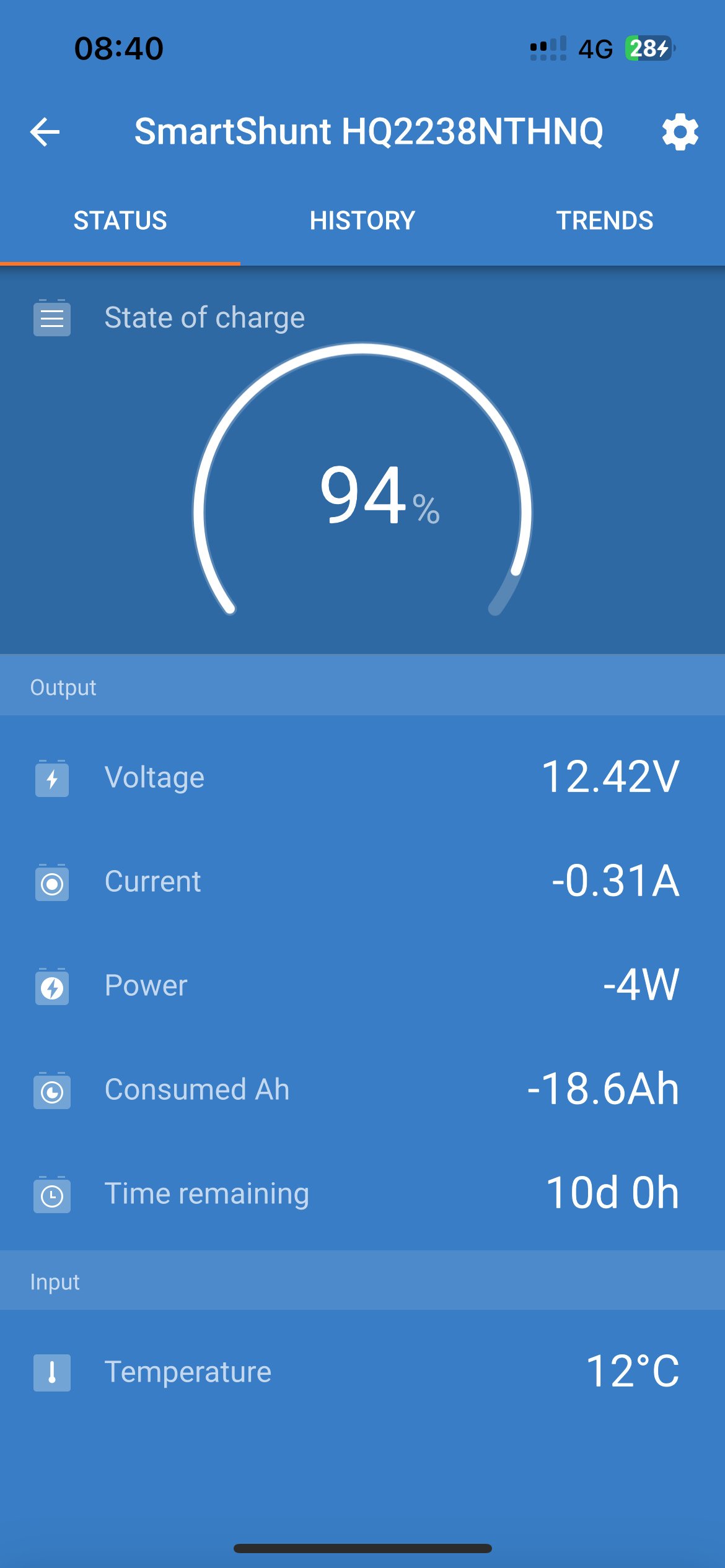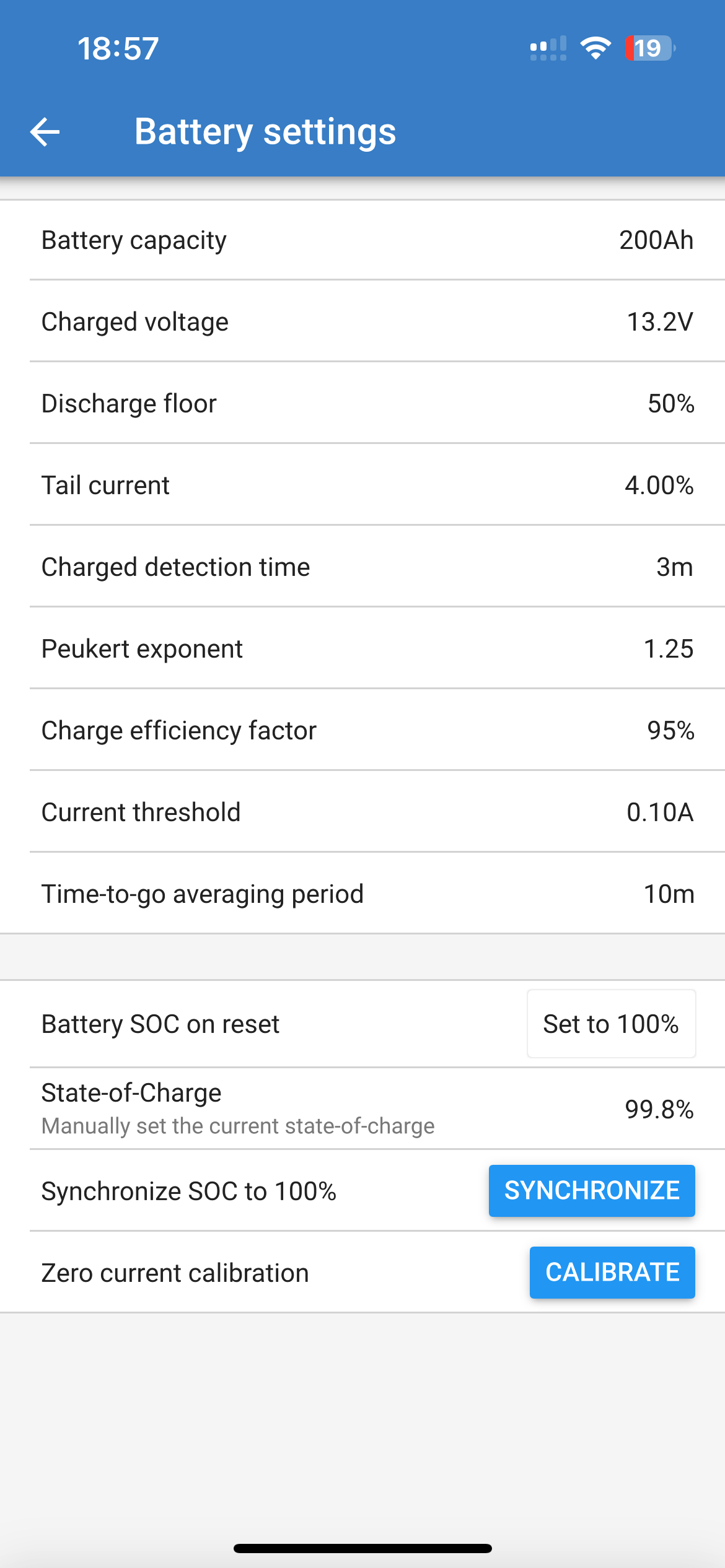I have x2 100 Ah Leisure Plus sealed lead acid batteries wired in parallel and have just installed a 500 A smart shunt to monitor battery usage. From the product description it suggests the best way to do this is through the State of Charge SOC readout. Following a installation I used the van for two night stop and had a reading 94% SOC but a battery voltage falling to 12.4V at which point I was minimising usage to protect the batteries.
From the above the SOC indicates I should be good to go for a significant amount of time but the this is not reflected in the actual battery voltage which clearly points to needing to put them on charge.
Apologies for my lack of understanding but hopefully someone can point me in the right direction


